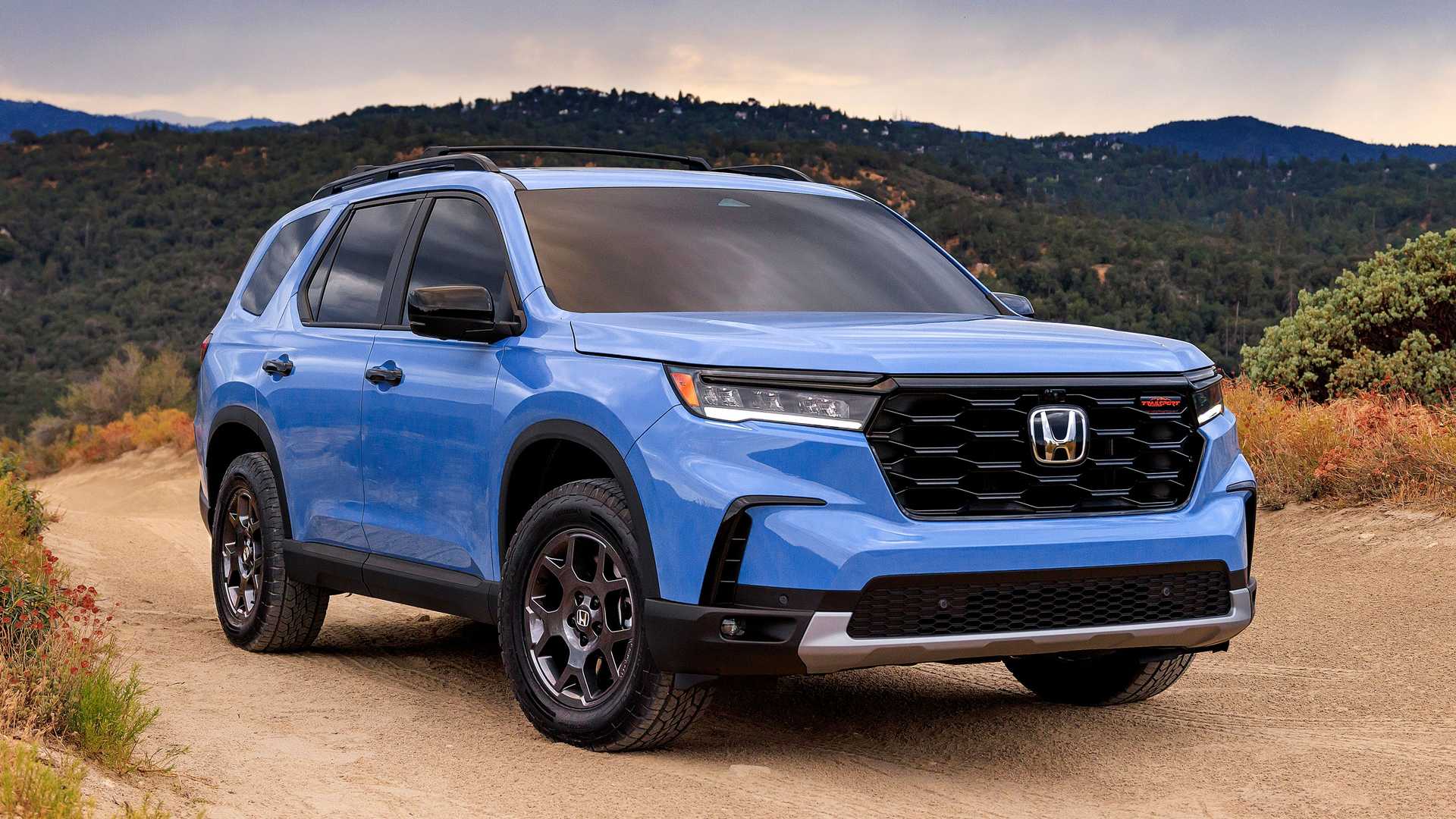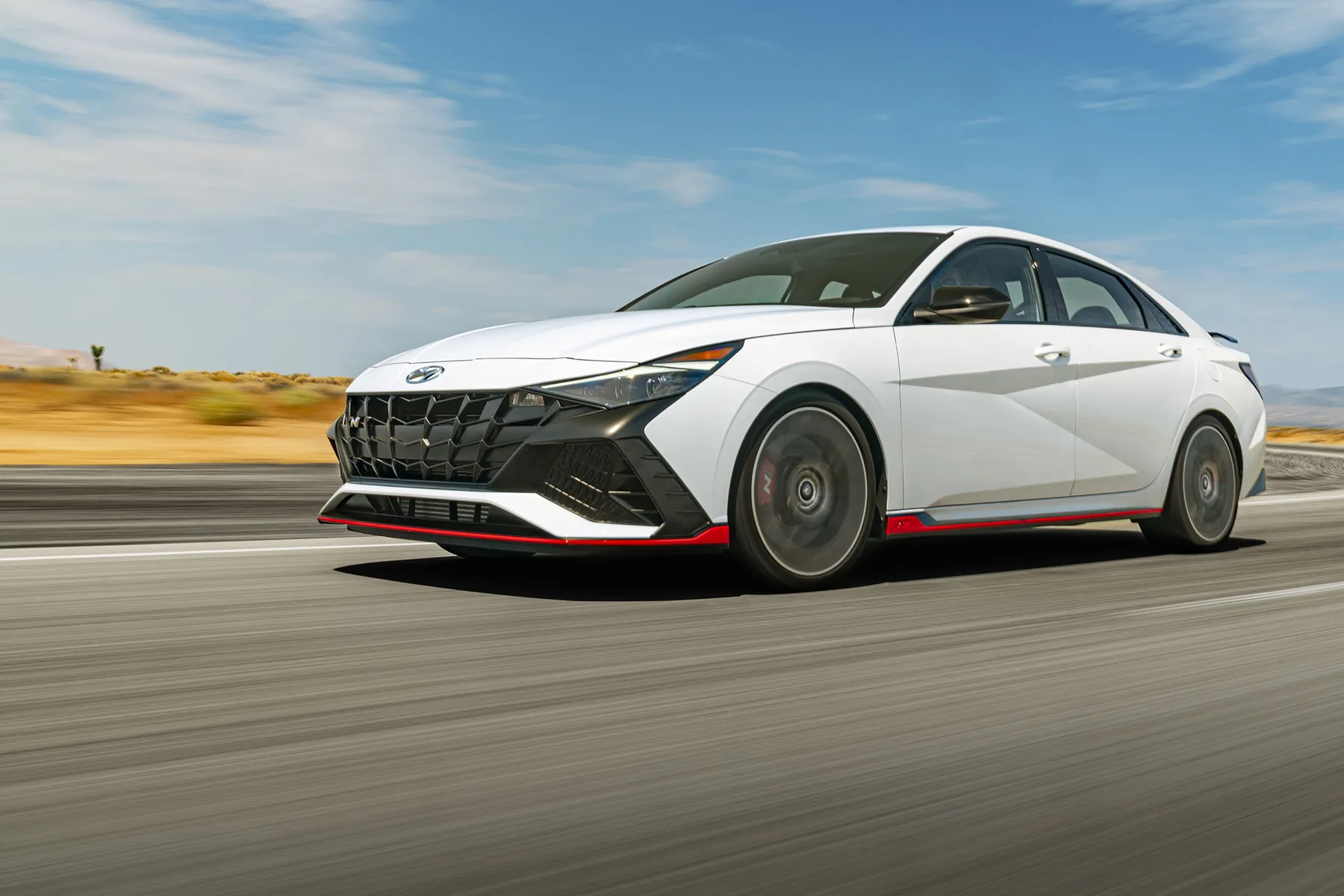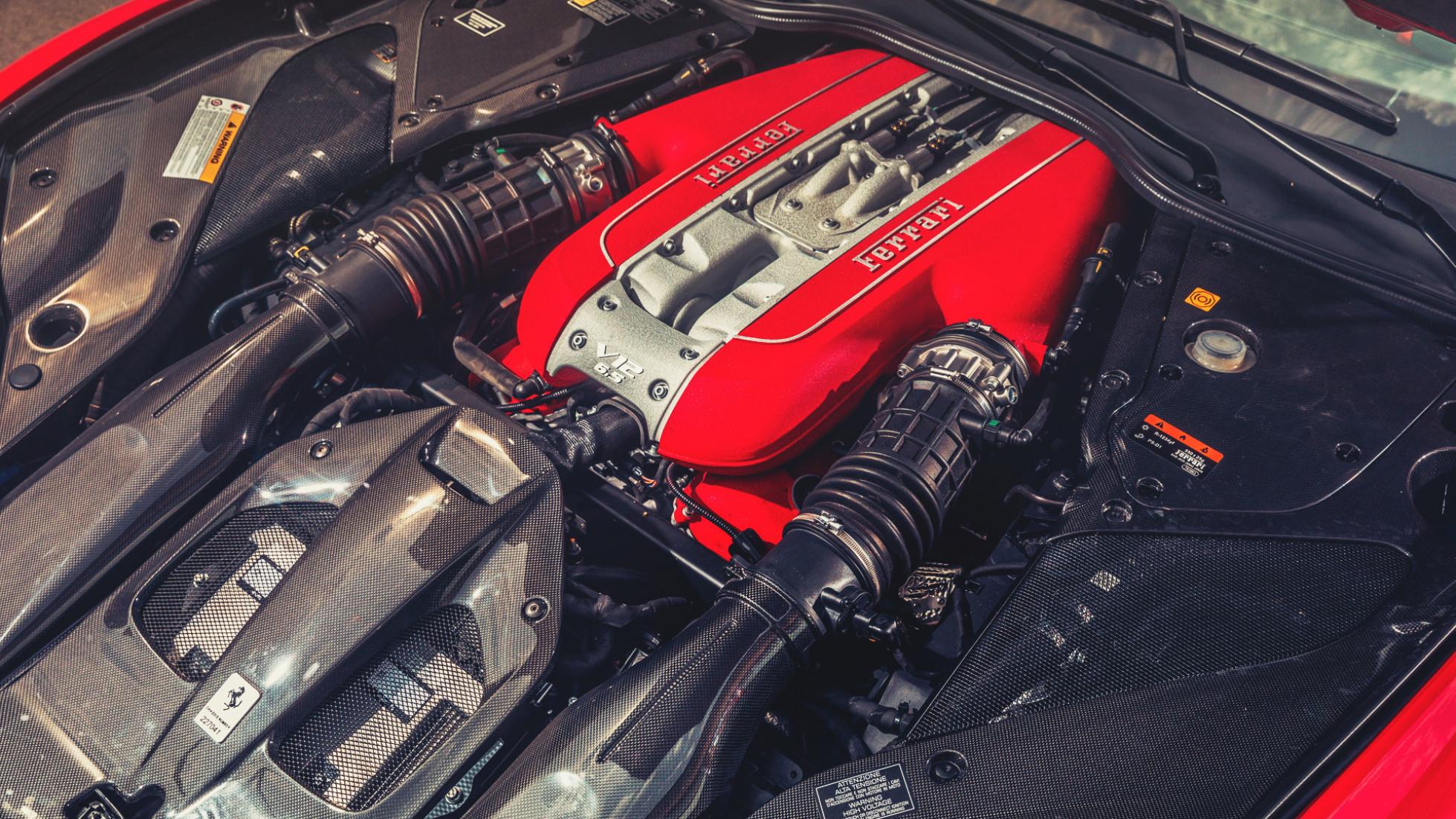Overview
The fourth generation Honda Pilot is something new and modern, yet refreshingly simple. Its interior is incredibly usable, and yet to the naked eye it would appear quite simple. At its heart is a naturally aspirated V6, mated to a 10 speed automatic transmission that powers an ingenious all wheel drive system. None of these qualities sound particularly flashy, especially given what some SUVs are capable of nowadays. However, Honda has managed to deliver an amazing driving experience in a 3 row SUV, keep in mind that the previous generation of this vehicle was essentially a minivan reshaped. How has Honda done this you might ask? The answer is simple, its only 2 words: Practicality & Simplicity.
Appearance
The new generation of Honda Pilot has a newly redesigned exterior. The front end is now more flat and angular, with the entire vehicle appearing overall more boxy. The rear end now has the Pilot name embossed into the tailgate. This exterior does make the pilot look far more modern than its previous generation did, which really looked like an egg on wheels.
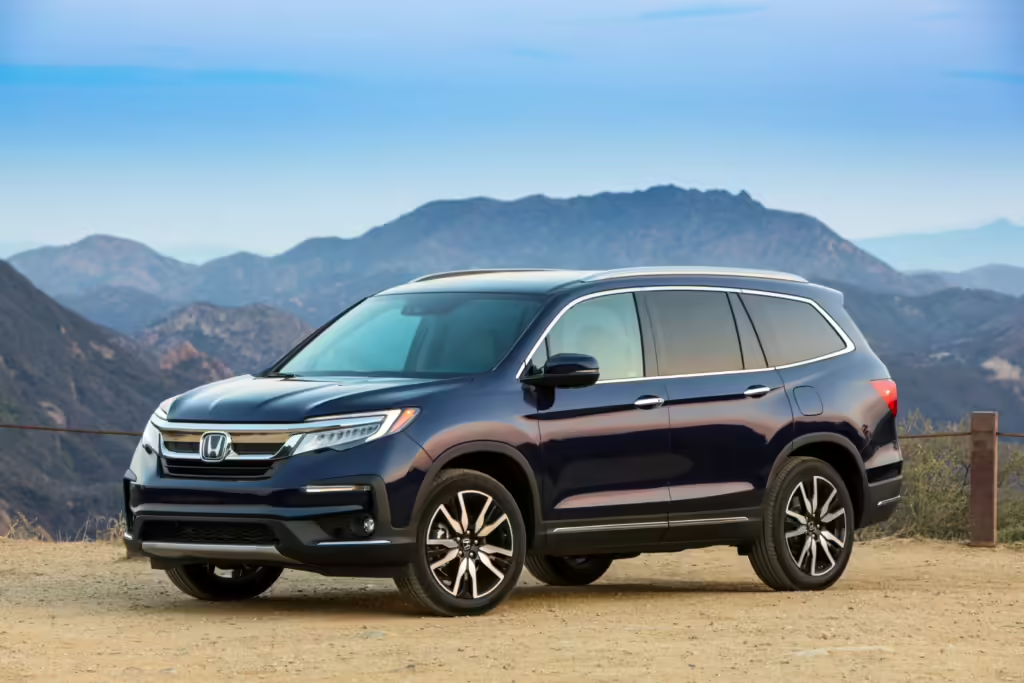
The fourth generation pilot also does look much more similar to its competitors now, to name a few: the Toyota Grand Highlander, Dodge Durango and BMW x7, amongst others. However this is not necessarily a bad thing, while the Pilot does now share a similar design language with its competitors, it still does have a unique look to it. We consider it be along the lines of the Honda getting the pilot up to speed with current times rather than Honda aiming to copy its competitors.
The interior space of the fourth generation Pilot is quite a nice place to be, it is of course not as luxurious as the interior of a BMW X7, but it is extremely practical and useable. Some reviewers have noted that it is far easier to understand how to use the Pilot than it is many other third row SUVs. Whereas other reviewers have noted that the door pockets on the Honda pilot are so well designed, with multiple levels of storage and different sized compartments, that it makes it seem ridiculous that other manufacturers haven’t figured out how to get door pockets right yet.

Depending on the trim level you get, the interior space will vary slightly. The interior features Honda’s standard infotainment system which is a highly praised system (surprisingly it is better than what Acura offers). Higher trims will of course come with a wonderful sound system as well.
The pilot does have the capability to seat 8 passengers, with most trims having an option to remove the middle seat from the second row and store in a compartment within the trunk, effectively turning the second row into captain’s chairs. The third row also does have the capability to recline. Other reviewers have noted that even with the third row up, there is still ample storage available in the trunk, with Car And Driver having fit six carry-on sized boxes into their Pilot.
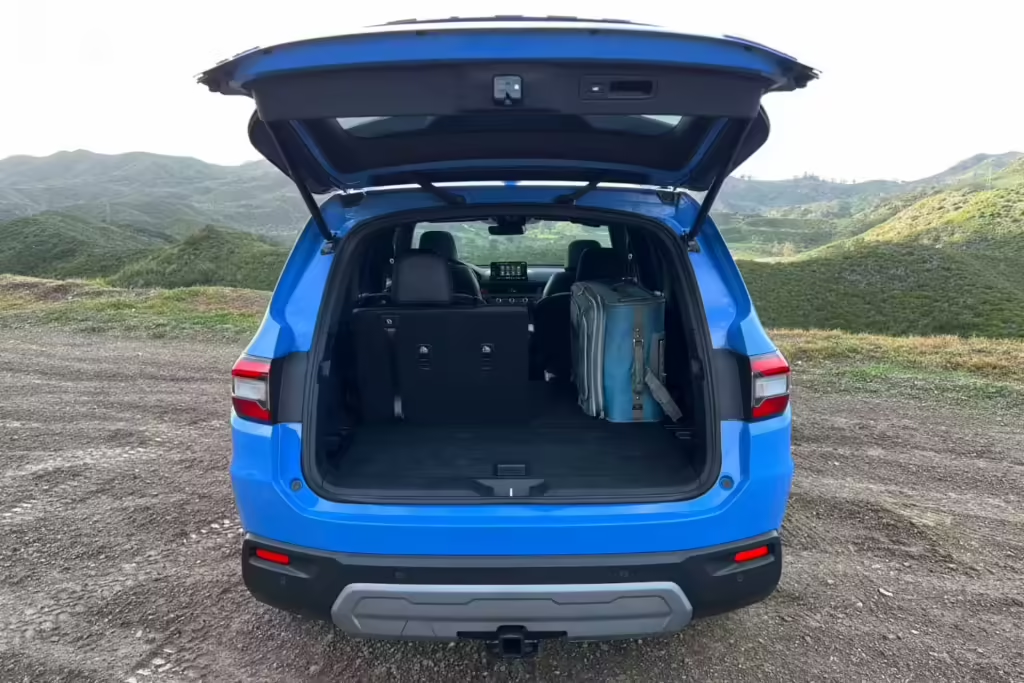
Accessing the third row is also very easy, Honda has included a simple button on the sides of the second row seats that will automatically move them forwards and fold them to down to allow passengers to get in and out of the third row. The front row seats are heated and ventilated, while the second row seats are heated. The pilot does come with tri-zone climate control, which is nice to meet the wishes of all passengers.
Most reviewers couldn’t say enough good things about the interior space of the fourth generation Pilot, it is simple, capable and useful. A blend of qualities that is surprisingly hard to find in today’s market.
Performance
Performance may not be the first thing that comes to mind when one thinks of a Honda Pilot, but this new generation brings something special from Acura, i-VTM4 All-Wheel-Drive System (this system can be added to all trim levels but is not available on all trim levels by default). This system is capable of sending 70% of the power to the rear wheels, which allows the Pilot to not only handle adverse conditions, but feel quite nimble as well. A reviewer noted that the Pilot handles as if it was rear wheel drive, feeling better than the rear-wheel-drive Ford Explorer ST. They found that the vehicle could easily be maneuvered around tight turns and quickly accelerate out of them as well.
This all wheel drive system also allows the Pilot to handle very well off-road. It won’t compete with a 4-runner or any other off-road purpose-built vehicle, but it will handle the occasional family camping trip with ease. The same applies to adverse weather conditions, after reading what I did in the research I conducted on the Pilot, I have no doubt that it would handle a Canadian winter with ease (provided that you drive accordingly of course).
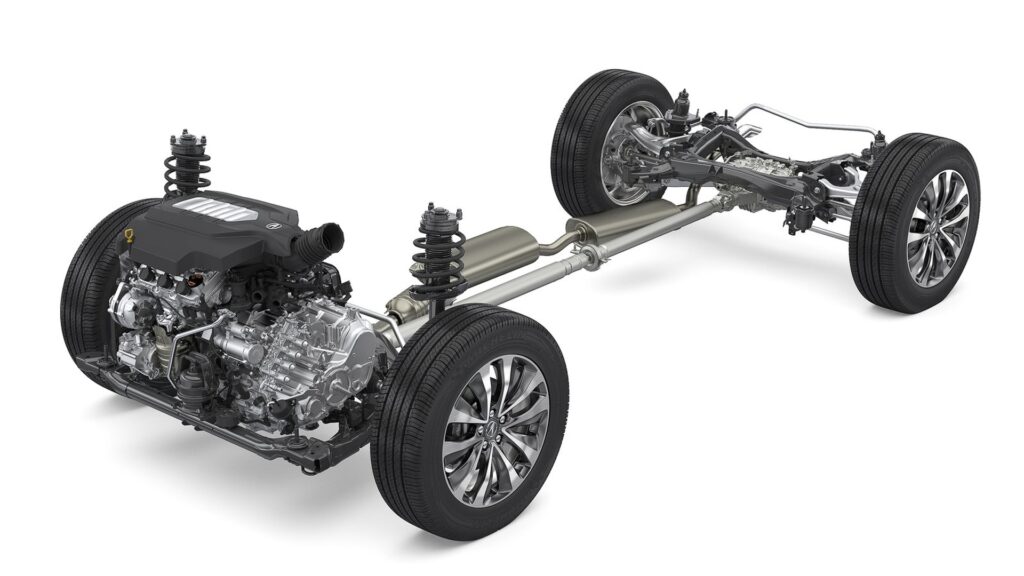
Powering this incredible all wheel drive system is a 3.5-liter V6 producing 285 horsepower and 262 lb-ft of torque, mated to a Honda 10-speed automatic transmission. There are paddle shifters available to control that 10 speed, although the average buyer of this vehicle may not use them, they have been noted to be quite responsive. The V6 is also a new engine that was developed by Honda, the engine does not have V-TEC (to the dismay of many Honda fans), but it does have cam phasers. Many reviewers have noted that the cam phasers nearly remove the need for V-TEC. The reason that a new engine was developed is that the older J-35 motor couldn’t meet modern emissions standards. One thing I am happy about is that Honda is still using a naturally aspirated engine. In a world of various forced induction and hybrid systems, naturally aspirated motors are become unique. This of course plays into the theme of this vehicle – simplicity. A naturally aspirated motor will almost always outlast forced induction or hybrid systems, while also requiring far less maintenance. Given that this motor was developed by Honda, there is very little reason to doubt that it will be reliable.
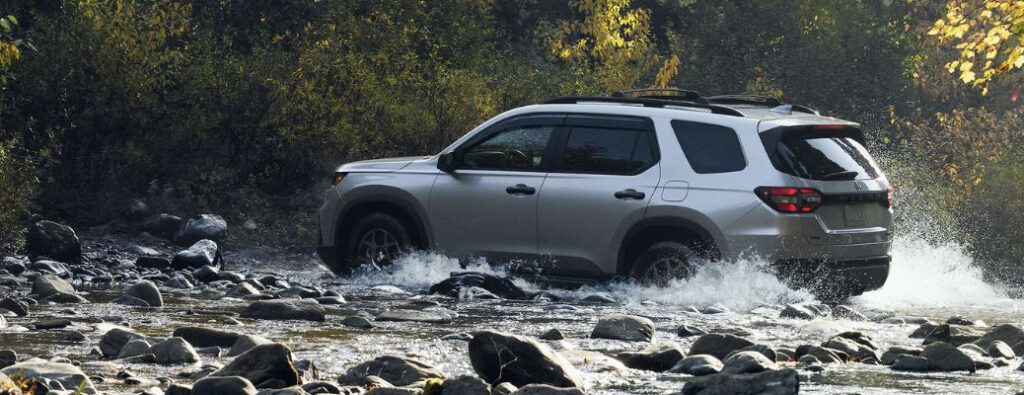
The 0-100 km/h (0-60mph) times likely won’t impress anyone, but then again, one must remember that the purpose of this vehicle isn’t to break any speed records. The Pilot can get from 0 to 100 km/h in 7.2 and 6.9 seconds in the Elite and TrailSport trims respectively.
Competition
Competition is stiff in the 3 row SUV segment, with the direct contenders being the Grand Highlander and Kia Telluride. Reviewers have noted that the Pilot does handle better than both of the aforementioned competitors. One reviewer also noted that the Pilot did have better cargo space than the Telluride when the third row is in use.
The 2024 Pilot starts at an MSRP of $51,650 CAD, while the 2024 Grand Highlander and Telluride start at $50,490 and $50,645 respectively (2025 MSRP for the Grand Highlander and Telluride have yet to be announced). In my opinion, the extra money for the Pilot is well worth it.
Final Opinion
After all my research, I must crown the fourth generation Honda Pilot as a practical King. It is not the flashiest, fastest or most aggressive 3 row SUV on the market. But is it a pleasure to drive? Does it have plenty of cargo space? Is its infotainment easy to use and idiot-proof? Is the interior nice? The answer to all of these questions is yes. In my mind this is the vehicle for someone who really should be buying a mini-van, has a budget slightly larger than a minivan budget and doesn’t want to drive something boring.
Sources
Car And Driver, SavageGeese, HeadQuarter Honda, DrivingLine

